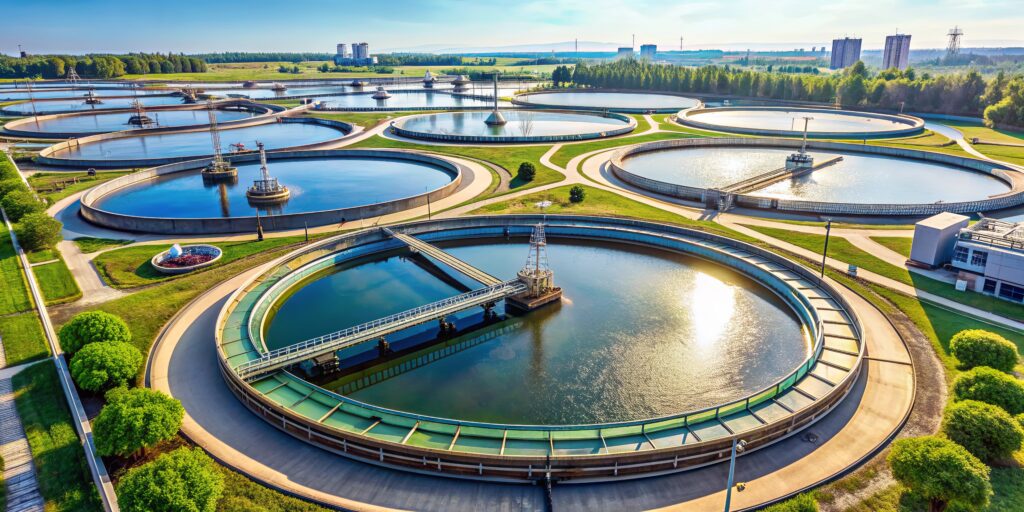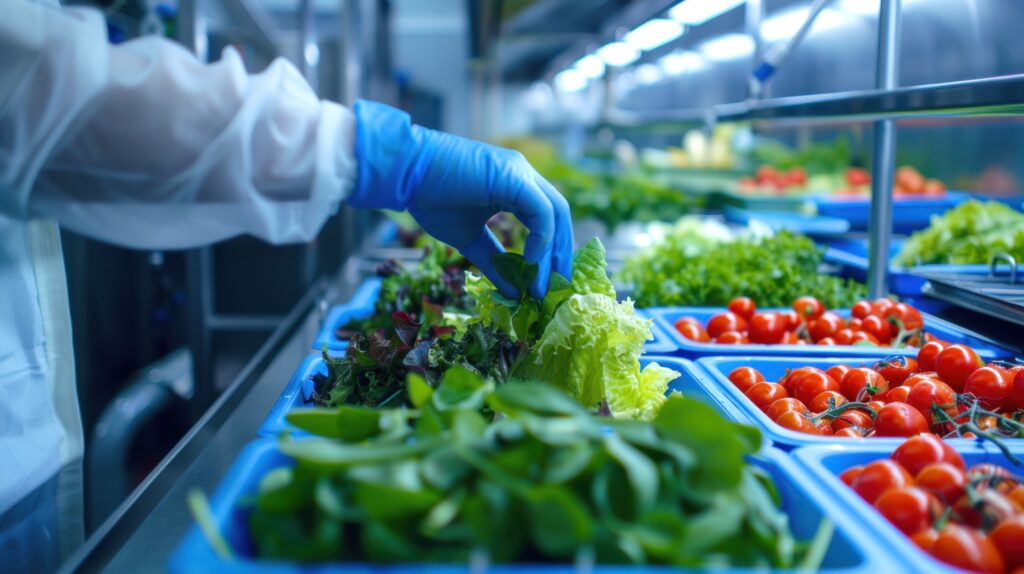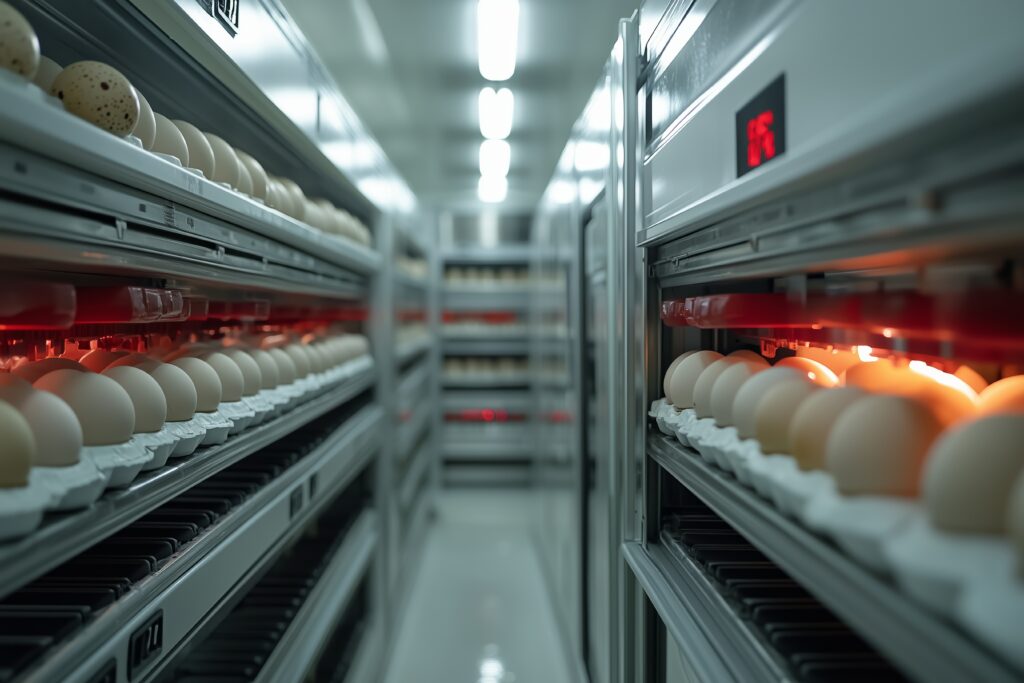
Greenox Application Domains
1. Air Disinfection and Bad Odor Removal

- Greenox Device is extremely effective in eliminating bacteria, viruses, insects, mold and fungus, toilet odor, cigarette odor, VOC gases in the environment.
- Singlet oxygen damages the cell walls, proteins and DNA/RNA structures of microorganisms.
- This high-energy oxygen form neutralizes pathogens and reduces the microbial load in the air.
- Bad odors are usually formed as a result of volatile organic compounds (VOCs), bacterial activities or chemical reactions. Singlet oxygen is used to effectively eliminate these odors.
- Singlet oxygen breaks down organic compounds that cause bad odors by oxidative means.
- In this process, the molecules that cause odor are converted into smaller and odorless compounds.
Advantages:
- It does not leave any chemical residue, it is a natural solution.
- High effectiveness against microorganisms.
- Permanently removes bad odors.
- It is harmless to human health.
- It is a sustainable and environmentally friendly technology.
- It improves air and water quality.
- High energy efficiency.
- Portable and easy to install devices.
- User-friendly interface with automatic control systems.
- It offers a more effective and permanent solution compared to chemical odor removers.
- It is a natural method, it is not harmful to human health.
- It removes bad odors by breaking down organic compounds.
Application Areas:
- Greenox Usage in Schools
- Greenox Usage in Toilets
- Greenox Usage in Gyms
- Greenox Usage in Vehicles
- Greenox Usage in Hospitals
- Greenox Usage in Hotels
- Greenox Usage in Cafes and Restaurants
- Greenox Usage in Shopping Malls
2.Water Sterilization

- Singlet oxygen has higher energy and reactivity than normal triplet oxygen (³O₂). Thanks to this feature, it damages the cell structures of pathogenic microorganisms (bacteria, viruses, fungi, etc.) in water.
- Singlet oxygen causes oxidative damage by attacking the cell membranes and internal structures (DNA, proteins, lipids) of microorganisms. This damage disrupts the functions of the cell and leads to its death.
- Singlet oxygen quickly reacts with dissolved organic substances and microorganisms in water, neutralizing them. This process ensures that the water is cleaned and sterilized.
- Singlet oxygen reacts with organic contaminants in water and breaks them down. This contributes to the natural cleaning of water.
- Singlet oxygen does not form harmful by-products during the disinfection process. Therefore, it is a more environmentally friendly option compared to traditional disinfectants such as chlorine.
- Greenox offers an effective and environmentally friendly method for the disinfection and sterilization of water.
Advantages:
- Compared to Chlorination: Chlorination can produce carcinogenic byproducts such as trihalomethanes (THMs) and haloacetic acids (HAAs). Singlet oxygen does not produce such harmful byproducts. Some pathogens (e.g., Cryptosporidium and Giardia) can be resistant to chlorine. Singlet oxygen is more effective against these resistant microorganisms. Chlorination leaves a chlorine residue in the water, which can negatively affect the taste and odor of the water. Singlet oxygen is naturally degradable and leaves no residue in the water. Chlorine can pose safety risks during transportation and storage. Singlet oxygen is typically generated at the point of application and does not require storage.
- Compared to Ozonation: Ozonation can produce toxic byproducts such as bromate. Singlet oxygen decomposes naturally and leaves no toxic residue. Ozone is short-lived in water, but byproducts formed during ozonation can be permanent. Singlet oxygen is completely environmentally friendly. Ozone production requires high energy.
- Compared to UV Disinfection: UV rays may lose their effectiveness when there is suspended solids or turbidity in the water. Singlet oxygen, on the other hand, reacts directly with target molecules and provides more effective oxidation. UV damages the DNA of microorganisms, but its effectiveness decreases if the water is turbid. Singlet oxygen, on the other hand, directly attacks the cell membrane and internal structures, inactivating a wider range of pathogens.
- Degradation of Organic Pollutants: Singlet oxygen can effectively degrade particularly stubborn organic pollutants such as phenols, aromatic compounds and pharmaceutical residues. This is a great advantage for pollutants that cannot be completely removed by conventional methods.
- Greenox is an environmentally friendly, effective and safe alternative to traditional methods in water treatment and disinfection. Its advantages such as not producing harmful by-products, high effectiveness against pathogens and stubborn pollutants and energy efficiency make it stand out among the water treatment technologies of the future.
Application Areas:
- Greenox Usage in Pools
- Greenox Usage in Water Dispensers
- Greenox Usage in Aquariums
- Greenox Usage in Kitchens
- Greenox Usage in Vegetable and Fruit Washing
- Greenox Usage in Drinking Water Facilities
3.Purification Sector

- Singlet oxygen (¹O₂) is a high-energy form of oxygen that can be used effectively in the water treatment sector, especially in the removal of organic pollutants and pathogens. Singlet oxygen, unlike ground state triplet oxygen (³O₂), has a higher energy level and is a powerful oxidizing agent thanks to this feature.
- Singlet oxygen can break down organic pollutants (e.g. pesticides, industrial chemicals, pharmaceutical residues) in water through oxidation. These pollutants may not be completely removed by conventional treatment methods, but they can be effectively decomposed thanks to the high reactivity of singlet oxygen.
- Especially in photocatalytic processes, singlet oxygen production accelerates the degradation of organic molecules.
- Singlet oxygen has a disinfectant effect on bacteria, viruses and other microorganisms. It neutralizes pathogens by damaging cell membranes and DNA.
- This feature can be used especially in drinking water treatment plants and wastewater disinfection.
- Singlet oxygen is a more environmentally friendly alternative to traditional disinfectants such as chlorine or ozone. It does not form harmful chemicals as a by-product and does not leave residue in the water.
- This feature minimizes environmental impacts by reducing the use of chemicals in water treatment processes.
- Industrial wastewater usually contains high concentrations of toxic and non-biodegradable compounds. Singlet oxygen offers an effective solution in the treatment of such wastewater.
- It can be used in the removal of complex pollutants, especially those occurring in the textile, pharmaceutical and chemical industries.
- Greenox is a promising technology in the water treatment sector, especially in the removal of difficult pollutants and pathogens. Thanks to its environmentally friendly properties and high reactivity, it plays an important role in advanced treatment technologies.
Advantages:
- High Reactivity: Singlet oxygen reacts rapidly with many pollutants and pathogens.
- Environmentally Friendly: Does not produce harmful chemicals as by-products.
- Wide Application Area: Effective on a wide range of organic pollutants to pathogens.
Application Areas:
- Greenox Usage in Drinking Water Treatment Plants
- Greenox Usage in Wastewater Treatment Plants
- Greenox Usage in Pharmaceutical Industry
- Greenox Usage in Chemical Industry
- Greenox Usage in Textile Industry
- Greenox Usage in Color Removal Plants
4.Food Industry

- In the food industry, singlet oxygen (¹O₂) is a reactive form of oxygen used especially in food processing, preservation and sterilization processes. Singlet oxygen is a high-energy state of the oxygen molecule (O₂) and is different from normal triplet oxygen and has a more reactive structure. Thanks to this feature, it is used in various applications in the food industry.
- Microorganism Control and Sterilization:
Singlet oxygen has a strong antimicrobial effect on bacteria, viruses, fungi and other microorganisms. Therefore, it can be used in the sterilization of surfaces, equipment and packaging materials in food processing plants.
It is especially effective in reducing microbial load to extend the shelf life of foods.masında etkilidir. - Use in Food Packaging:
- Singlet oxygen can be used in active packaging systems. In these systems, the oxygen level inside the packaging is controlled to preserve the freshness of the food and slow down the spoilage process.
- It is also used to prevent the accumulation of microorganisms on the surfaces of packaging materials.
- Maintaining Food Quality:
- Singlet oxygen helps preserve the nutritional value and flavor of foods by inhibiting undesirable chemical reactions (e.g., oxidation) in foods.
- It can be used to prevent oxidative deterioration, especially in fatty foods.
- In Food Processing Processes:
- Singlet oxygen can be used to break down harmful compounds (e.g., toxins or allergens) generated during food processing.
- It is also effective in reducing pesticide residues in food.
- Water Purification and Disinfection:
- Singlet oxygen can be used to purify and disinfect water used in food production. This prevents waterborne pathogens from contaminating food.
- Greenox plays an important role in the food industry in areas such as microorganism control, sterilization, packaging and food quality protection. However, care must be taken during its use and appropriate technologies must be used. In this way, food safety and quality can be increased, while environmental impacts can be minimized.
Advantages:
- Environmentally Friendly: Singlet oxygen is more environmentally friendly than chemical disinfectants and does not leave harmful residues.
- Effective and Fast: It acts quickly and effectively on microorganisms.
- Food Safety: It increases the safety of food while extending its shelf life.
Uygulama Alanları:
- Greenox Use in Sterilization and Disinfection in Food Processing Facilities
- Greenox Use in Packaging Systems
- Greenox Use in Food Storage and Shelf Life Extension
- Greenox Use in Water Treatment and Disinfection
- Greenox Use in Cleaning Food Surfaces
- Greenox Use in Purifying Food Processing Wastes
- Greenox Use in the Production of Food Additives
- Greenox Use in Oxidation Control in Food Processing
- Greenox Use in Food Safety and HACCP Applications
- Greenox Use in Food Research and Development Laboratories
5.Industrial Chimney Odor Removal

- The use of singlet oxygen in the removal of odors from industrial flue gases is a technology that has developed in recent years. Singlet oxygen (¹O₂) is a high-energy form of the oxygen molecule and is effective in breaking down organic compounds that cause odors due to its reactive properties. This method is used to control unpleasant odors, especially in industrial facilities.
- Odor-causing compounds in industrial flue gases are typically volatile organic compounds (VOCs), sulfur compounds (e.g., hydrogen sulfide, mercaptans), and nitrogen compounds. Singlet oxygen reacts with these compounds to convert them into less harmful or odorless compounds. However, each application requires specific design and optimization.
- Odor Removal Mechanism of Singlet Oxygen
- Reaction: Singlet oxygen reacts rapidly with organic compounds that cause odor. It particularly interacts with compounds with double bonds or aromatic structures and breaks these compounds down.
- Oxidation: Singlet oxygen oxidizes organic compounds into smaller and generally odorless molecules (e.g. water, carbon dioxide).
- Odor Removal: As a result of these reactions, odor-causing compounds are eliminated and the odor in the flue gas is controlled.
Advantages:
- High Reactivity: Singlet oxygen reacts quickly and effectively with compounds that cause odor.
- Environmentally Friendly: This method provides odor removal without the use of harmful chemicals and usually harmless compounds are formed as a byproduct.
- Wide Application Area: Effective against various types of odors that occur in different industrial processes.
Uygulama Alanları:
- Greenox Use in Chemical Industry
- Greenox Use in Food and Beverage Industry
- Greenox Use in Wastewater Treatment Plants
- Greenox Use in Paper and Pulp Industry
- Greenox Use in Waste Processing and Recycling Plants
- Greenox Use in Agriculture and Livestock
- Greenox Use in Pharmaceutical and Cosmetic Industry
- Greenox Use in Textile Industry
- Greenox Use in Energy Production Plants
- Greenox Use in Leather and Leather Processing Industry
- Greenox Use in Plastic and Rubber Industry
- Greenox Use in Airports and Ports
- Greenox Use in Hospitals and Healthcare Facilities
- Greenox Use in Automotive Industry
6.Animal Husbandry

- Singlet oxygen (¹O₂) offers innovative solutions in the areas of hygiene, health and productivity in animal husbandry with its high reactivity and oxidative effect. Greenox is a versatile tool that provides hygiene, treatment and productivity increase in fish, poultry and cattle farms. In particular, it offers solutions to antibiotic resistance and environmental pollution problems, indicating that it will play an important role in modern animal husbandry.
- Use and Benefits in Fish Farms
- Improving Water Quality:
Singlet oxygen neutralizes pathogens (bacteria, viruses, parasites) in water, reducing the risk of infection. It is especially used to disinfect water in closed system fish farms.- Example: Control of bacteria that cause fish kills, such as Aeromonas.
- Reducing Antibiotic Use:
Treatment of common bacterial infections in fish (e.g. fin rot) with singlet oxygen reduces the risk of antibiotic resistance. - Feed Hygiene:
Removing mold and toxins from feed protects digestive health and improves growth performance.
- Improving Water Quality:
- Use and Benefits in Poultry (Chicken, Turkey) Farms
- Air and Surface Disinfection:
Singlet oxygen reduces respiratory pathogens (e.g. E. coli, Salmonella) by being delivered to the barn air via cold plasma or special equipment.- Example: Reducing ammonia levels and improving air quality in chicken coops.
- Cleaning of Water Systems:
- Elimination of biofilm and bacteria in drinking water prevents intestinal infections.
- Foot and Skin Health:
- Photodynamic therapy (PDT) can be used to treat foot wounds or fungal infections in poultry locally.
- Air and Surface Disinfection:
- Use and Benefits in Cattle (Cow, Cattle) Farms
- Mastitis Treatment:
Mastitis in cows can be controlled without antibiotics by the photodynamic effect of singlet oxygen. - Stable Hygiene:
Disinfection of birthing pens, milking equipment and feeders prevents productivity loss due to infection. - Feed Safety:
Degradation of mycotoxins (e.g. aflatoxin) in feed with singlet oxygen prevents liver damage and milk yield loss. - Reproductive Efficiency:
Reducing oxidative stress in sperm and embryo storage fluids increases fertilization success.
- Mastitis Treatment:
- Benefits to General Animal Health
- Supporting the Immune System:
Reducing oxidative stress increases animals’ resistance to infections. - Infection Control:
Using it as an alternative to antibiotics prevents the formation of resistant bacteria. - Reducing Stress and Mortality Rates:
Clean and pathogen-free environments improve animal welfare.
- Supporting the Immune System:
Advantages:
- Environmentally Friendly: Does not leave chemical disinfectant residue.
- Sustainability: Compliance with “green livestock” goals by reducing antibiotic use.
- Cost Effectiveness: Minimizes economic losses due to disease.
Application Areas:
- Greenox Usage in Cattle and Sheep Farms
- Greenox Usage in Chicken Farms
- Greenox Usage in Fish Farms
- Greenox Usage in Slaughterhouses and Slaughterhouses
- Greenox Usage in Storage and Packaging of Animal Products
7.Agriculture Sector

- Singlet oxygen (¹O₂) stands out as an innovative tool in the agricultural sector that improves soil health and supports plant growth with its high reactivity and oxidative power. Greenox offers a versatile solution that protects soil health while ensuring faster and healthier plant growth. It is a promising technology, especially in organic farming and sustainable farming practices. However, it is critical to use it with the right dose and application methods.
- Its Role in Increasing Soil Fertility
- Soil Disinfection:
Singlet oxygen neutralizes harmful microorganisms (nematodes, fungi, bacteria) in the soil through oxidative stress. It can be used as an alternative to chemical fumigants.- Example: Control of Fusarium species that cause tomato root rot.
- Organic Matter Decomposition:
It accelerates the nutrient cycle by ensuring that organic waste (plant residues, compost) in the soil decomposes faster. This increases humus formation and the water retention capacity of the soil. - Heavy Metal Detoxification:
It binds toxic metals (e.g. cadmium, lead) in the soil through oxidative reactions and prevents their uptake by plants.
- Soil Disinfection:
- Plant Growth Acceleration Mechanisms
- Activating Defense Mechanisms:
Low doses of singlet oxygen increase disease resistance by triggering antioxidant enzyme production (peroxidase, catalase) in plants.- Example: Resistance to rust disease in wheat.
- Promoting Seed Germination:
Germination rate can be increased by clearing pathogens from the seed coat and through oxidative signaling.- Example: 15-20% increase in germination efficiency in corn seeds.
- Photosynthetic Efficiency:
It can increase the rate of photosynthesis by stabilizing the reaction centers in chloroplasts.
- Activating Defense Mechanisms:
Advantages:
- Environmentally Friendly: Does not leave any chemical residue, does not disrupt soil microbiota.
- Sustainability: Safer than traditional pesticides and fumigants.
- Fast Effect: Can neutralize pathogens in minutes.
- Cost Effectiveness: Reduces input costs by preserving soil fertility in the long term.
Application Areas:
- Use of Greenox in Soil Sterilization:
Disinfection of soil in greenhouses and open fields without using chemicals. - Use of Greenox Seed Treatment:
Reducing disease risk by treating seeds with singlet oxygen. - Use of Greenox for Compost Improvement:
Organik gübrelerdeki patojenlerin ve toksinlerin temizlenmesi. - Hydroponic Systems Greenox Usage:
Hydroponic Systems Greenox Usage:
